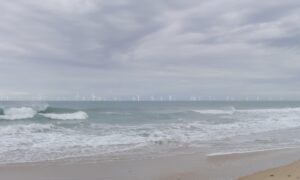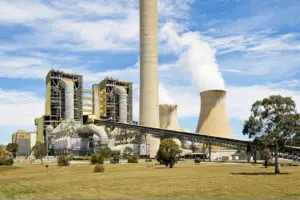A 3 gigawatt (GW), $6 billion wind project has been proposed for the south-west corner of Western Australia to help fill the gap created by the expected closure of the state’s last coal generators at the end of the decade, and to tap into the growing industrial demand for cheap and clean power.
Spanish giant Acciona Energia is in the midst of a series of community meetings in the region to discuss its plans for the Bellwether wind project, which would comprise some 400 wind turbines sited along a proposed new transmission link.
The site is around 60 kms east of Collie, the site of the state’s last coal fired generation units, all of which are expected to close by the end of the decade.
It joins a host of multi-gigawatt scale projects in the region, including the 2,240 megawatt hour (MWh) Neoen battery at Collie, and the 2,000 MWh Synergy battery in the same town. Both are under construction. An even bigger battery, at 2,640 MWh, has been proposed by Chinese solar giant Trina Solar south of Perth.
Acciona Energia is currently commissioning what remains for now the biggest wind farm in Australia, the 930 MW MacIntyre project in Queensland (pictured above), although that will soon be overtaken by the `1.33 GW Golden Plains wind project in Victoria when its second stage is completed.
The 3 GW proposed for Bellwether will trump those and other gigawatt scale projects that have now become the preferred size as developers and project owners look for scale and bigger turbines to keep costs low.
The project will be sited in the state’s wheatbelt – near the towns of Darkan, Arthur River and Tarwonga – and is being pitched as a way to “drought-proof” the region which is suffering from significant changes in climate and impacts on agriculture.
If it can get the support of local landowners, and First Nations peoples, and the required environmental approvals, Acciona Energia hopes to begin construction in 2028, meaning the first power could be delivered by 2030, around the time the last of the coal units will be closing.
Western Australia currently has a renewables share of just over 40 per cent, but this is expected to change rapidly in coming years as the last coal fired power stations exit, and because of the surge in electrification, both in homes and businesses.
The growing prospects of green industries has led to a government study that predicts up to 50 gigawatts of new wind, solar and storage capacity will be needed in the coming decades to meet that demand.
That will require significant investment in new transmission lines, and because W.A. is an isolated grid, with no connections to other states or countries, it also presents an interesting challenge to the market operator.
W.A. has a high share of rooftop solar, and the two big batteries at Collie, and others at Kwinana and Wagerup, are designed to soak up excess PV and put it back into the grid in the evening peak.
The state has already hit a peak of 82 per cent renewables, which AEMO boss Daniel Westerman noted in an interview on the Energy Insiders podcast earlier this week is a remarkable achievement given its scale and isolation.
Renew Economy has reached out to Acciona Energia for further comment and details.








